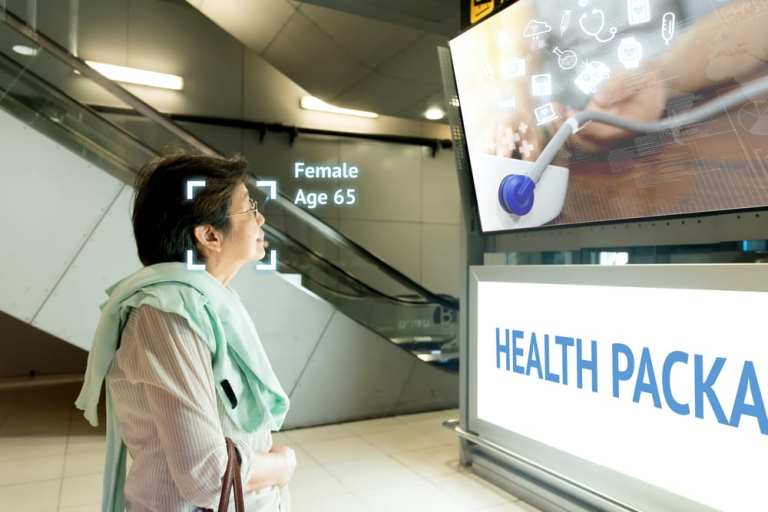How AI Enhances The Customer Experience

Much has been written about artificial intelligence (AI) as the driver of tools for fraud detection and security. What else can it do, though, especially for online marketplaces? AI is being increasingly focused on visual search and personalization, as this article explains with examples.
The latest Payments And The Platform Economy Playbook examines how marketplaces are using technologies like AI to innovate the customer experience.
Much has been written about artificial intelligence (AI)-powered tools for fraud detection and security. What else can it do, though, especially for online marketplaces? AI is being increasingly focused on visual search and personalization.
AI For Visual Search
The popularity of Instagram and Pinterest demonstrates the rise of visual platforms. Visual search has held promise for online retailers for some time, especially since offering more visual content can engage tech-savvy millennial and Gen Z consumers. Over 80 percent of Gen Zers say the look of a retailer’s website impacts their purchasing decisions, and a majority (62 percent) of millennials want visual search over any other search technology.
Lihi Pinto Fryman, co-founder and chief marketing officer for visual AI company Syte, believes that retailers looking to appeal to younger generations must become more visual. “Millennials [see] hundreds, sometimes thousands of images [on] their mobile [phones] every single day, and we wanted to allow them to use those images to interact with their favorite retailers, brands [and] shops,” she said.
Users can screenshot products they found on Instagram, Pinterest or similar social media apps, then upload the images with Syte’s camera tool, which uses AI technology to display visually similar products on retailers’ platforms.
“It might not be the exact same product, because maybe it’s something that an influencer is wearing and [it] costs $5,000, but it will give the retailer a chance to show you all of the similar-looking items within [its] collection,” Fryman said. “It’s really connecting the [product] inspiration from social with the retailer’s collection.”
Online resale marketplace thredUP is also examining how it can bring more sophisticated AI into other areas of its marketplace, such as visual search optimization. This would use AI to properly tag and categorize items while also relying on customers’ mobile cameras for more engaging experiences.
“I think there [are a lot] of opportunities to give people the power to search based on the visuals they see [through the camera,” said thredUP’s co-founder and chief technology officer Chris Homer. “If it’s not through the camera, you can imagine that you’re browsing another app like Pinterest or Instagram [while also] being able to share what you see in the thredUP app and then having a search based on that. That’s some of the more advanced image recognition AI that we’ll definitely bring to mobile in the future.
AI for Personalization
Many retailers are relying on AI to enhance personalization. Makeup marketplace NakedPoppy is using an AI-driven personalization tool to quickly match customers with the right products. The tool takes information from consumers’ questionnaire answers, photos of their skin tones and personal information like skin color, type, age, eye color and allergies before recommending goods. An important component of the site is the use of digital technology to screen its products for harmful chemicals.
CEO and Co-Founder Jaleh Bisharat explained how NakedPoppy is intended for the type of woman who is busy and wants accurate recommendations, not the type of woman who sees shopping as leisure. The goal, she said, is to help use digital technology and artificial intelligence (AI)-screened data to turn makeup into a “set-it and forget it” product.
“Clean” makeup and secondhand clothing seem like very different products, but online resale marketplace thredUP also used AI to personalize services, generate recommendations and position sellers’ goods in the right categories and channels. The technology has also been used to automate the production of products such as Goody Boxes, which provide consumers an assortment of clothes based on their interests.
“When we started [Goody Boxes in 2017, they were] very manual to begin with — stylists [did] all of the work,” Homer said. “I imagine, in the future, some of [the boxes] will even be completely automated. I imagine there will almost always be a human in the loop in that sequence, but it will be less and less in terms of the selection and probably more of a review, tweak and approve type of workflow,” said thredUP’s Homer.
Like rising interest in visual search, the uptake in secondhand marketplaces is also being driven by younger consumers. One third of Gen Z members and more than one quarter of millennials will make secondhand purchases in 2019 due to environmental concerns and cheaper prices.
The importance and popularity of AI for visual search and AI for personalization will likely continue to grow as millennials and Gen Z consumers age and gain more spending power.